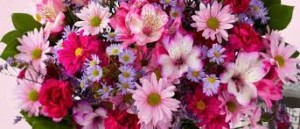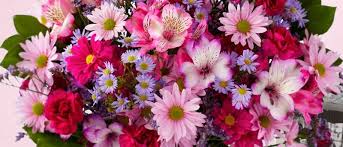 ProFlowers
ProFlowers
For several centuries, medical practitioners have long acknowledged the therapeutic properties of certain flowers. More than just spanning time, this knowledge also spans many cultures around the world. One of the greatest advantages is that flowers and plants offer completely natural medicinal properties, often without the scary side effects that modern pills and medications bring on. Furthermore, remedies made from flowers can be much cheaper than drugs marketed by pharmaceutical companies.
The best places to obtain dried flowers or their essential oils are a herbal health store. Be careful when preparing tonics and other mixtures since some flowers can be very potent. Pregnant or nursing mothers in particular should consult with their doctor before using any essential oils. To learn more about using medicinal flowers for home remedies, have a look at some of the most effective ones below.
Angelica herb – Remember the green bits of candied angelica used to decorate cakes? It comes from the very same plant as the Angelica flower. Like the rest of the plant, the flower is extremely fragrant and has a number of medicinal uses including digestive disorders and coughs and colds. It can also be given as a strengthening tonic for seniors and children.
Begonia – Begonias can be prepared in several different ways. An infusion made by soaking the flowers in hot water helps to eliminate headaches and rid the body of toxins. The crushed flowers and leaves can also be rubbed directly on the skin to help relieve pain and heal sores or burns.
Bellis perennis – Also known as the common daisy, this flower holds a wealth of medicinal properties despite its unassuming appearance. When used in an infusion, it acts as a laxative as well as an expectorant to purge the body of toxic matter. It is also used as a home remedy to help treat physical disorders such as arthritis and rheumatism. Direct application to the skin through an ointment or poultice aids in healing wounds.
Black cohosh – Women should be very careful when using Black Cohosh as it is an extremely potent flower. Black Cohosh can be used as an emmenagogue, which means that it stimulates the uterus. Women with menstrual problems can effectively use low doses of this flower to help regulate their cycles and relieve pain. In the same vein, pregnant women should avoid it since it can bring on a miscarriage or early labor.
Blood root – This little white flower is very effective in low doses when treating respiratory problems. It can be made into a paste when mixed with other compounds and applied on the skin to treat rashes, warts and various dermic problems. When ingested as a tea or tonic, bloodroot is very effective in cleansing the blood and lowering fevers.
Blue lobelia – Native Indians used Blue Lobelia as a treatment for syphilis as well as less severe ailments. Tea made with this flower helps to relieve fevers, coughs and colds, and digestive problems.
Butterfly weed – Also used in Native Indian cuisine, Butterfly Weed is primarily effective in treating respiratory and related lung issues. When ingested in large amounts, it can be used for internal cleansing and pain relief. Direct application to the skin in the form of a poultice can help to reduce swelling or heal wounds.
Calendula – The bright yellow petals of calendula flowers are most effective when mixed with other substances to create ointments or creams. It can then be used on the skin to heal burns, cuts, and wounds.
Courtesy proflowers.com







